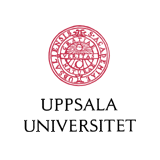|
Energy Constrained Wireless Sensor Networks:
Communication principles and sensing aspects.
Erik Björnemo
PhD Thesis, Uppsala University,
ISBN 978-91-506-2043-6,
Jan. 2009, 279 pages.
The thesis available in
Pdf
Paper copies of the thesis can be obtained from
Ylva Johansson,
Signals and Systems Group, Uppsala University,
Box 534, SE-75121 Uppsala, Sweden.
See also the
thesis homepage
at the Uppsala University database for Ph.D. theses.
- Outline:
-
Imaginea set of small, self-contained, electronic devices equipped with
sensors and the ability to communicate with each other without wires.
These so-called sensor nodes can then together form a wireless sensor
network.
Such a network can monitor a region or phenomenon of interest and
provide useful information about it by combining measurements taken by
individual sensor nodes and then communicated over the wireless interface.
We are in this thesis concerned with energy efficient wireless communication
and energy based compromises between sensing and communication.
Wireless sensors with computing capabilities facilitate a range of
applications
that have previously been infeasible, or at lest too expensive. For
instance, in a research project on Great Duck Island (Ontario, Canada), the
breeding behaviour of a bird, Leach's Storm Petrel, was monitored by the
use of a wireless sensor network (Mainwaring et al., 2002). Sensor nodes
equipped with infrared sensors detected the presence of birds inside their
nesting burrows, while other sensors registered environmental parameters
such as temperature, pressure and humidity. Without the wireless sensors,
the April-to-October monitoring would have been practically infeasible.
Another
application area gaining strong interest is that of structural health
monitoring, in which wireless sensor networks are used
to monitor structures
such as bridges and nuclear power plants in order to detect damages or
other changes in the structures. Yet other areas, to mention but a few, are
health care, surveillance and security, wireless automation and military
target
tracking. Further examples can be found in Romer and Mattern (2004).
In many applications the key feature of a wireless sensor network is that
it is just that, wireless. The use of wired node-to-node connections would
in most applications constitute a severe complication, both practically and
economically, in particular when hundreds of sensors are envisioned. But,
while radio communication is a major enabling technology, the absence of
wires is also the cause of one of the most prominent concerns, limited
energy.
Limited energy considerations is a nearly inescapable topic in wireless
sensor
network design as it imposes strict constraints on the network
operation, and
for this reason limited energy is the underlying theme of the present work.
Recharging batteries in a wireless sensor network is sometimes impossible
due to the placement of the sensor nodes, but more commonly it is merely
practically and/or economically infeasible. At any rate, it is widely
recognised
that, generally, energy is a strictly limited resource in wireless sensor
networks and that the consequences of this limitation must be considered
(Estrin et al., 2001, Shih et al., 2001, Sohrabi et al., 2000).
Ultimately, if we want to have the sensor network performing satisfactorily
for as long as possible, the energy constrained operation of the sensor
nodes forces us to compromise between different activities in the network.
Compromises are needed on the node level as well as on the network level.
Saving energy is tantamount to finding the best compromise, the best
tradeoff,
between different energy consuming activities and their design.
Based on the recognition in the literature that the radio is a prominent
energy consumer (Raghunathan et al., 2002, Shih et al., 2001), we devote
the present thesis largely to energy efficient radio communication and the
related compromises.
-
Abstract:
-
Wireless sensor networks are attractive largely because they need no
wired infrastructure. But
precisely this feature makes them energy constrained, and the
consequences of this hard energy
constraint are the overall topic of this thesis.
We are in particular
concerned with principles
for energy efficient wireless communication and the energy-wise
trade-off between
sensing and radio communication.
Radio transmission between sensors incurs both a fixed energy cost from
radio circuit
processing, and a variable energy cost related to the level of radiated
energy. We here find
that transmission techniques that are otherwise considered efficient
consumes too much processing
energy.
Currently available sensor node radios typically have a maximum
output power
that is too limited to benefit from transmission-efficient, but
processing-intensive, techniques.
Our results provide new design guidelines for the radio output power.
With increasing transmission
energy - with increasing distance - the considered techniques should be
applied in the
following order: output power control, polarisation receiver diversity,
error correcting codes,
multi-hop communication, and cooperative
multiple-input multiple-output
transmissions.
To assess the measurement capability of the network as a whole, and to
facilitate a study of
the sensing-communication trade-off, we devise a
new metric: the network
measurement
capacity. It is based on the number of different measurement sequences
that a network can
provide, and is hence a measure of the network's readiness to meet a
large number of possible
events. Optimised multi-hop routing under this metric reveals that the
energy consumed for
sensing has decisive impact on the best multi-hop routes. We also find
support for the use of
hierarchical heterogeneous network structures.
Model parameter uncertainties have large impact on our results and we
use probability
theory as logic to include them consistently. Our analysis shows that
common assumptions
can give misleading results, and our analysis of radio channel
measurements confirms the
inadequacy of the Rayleigh fading channel model.
-
Keywords:
-
Wireless sensor network, communication under processing cost,
wireless channels,
fading, probability theory as logic, uncertainty, measurement capacity.
This material is presented to ensure timely dissemination
of scholarly and technical work. Copyright and all rights
therein are retained by authors.
All persons copying this information are expected to
adhere to the terms and constraints invoked by each authors
copyright. This work may not be reposted
without the explicit permission of the copyright holders.
|

